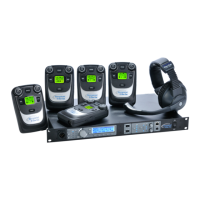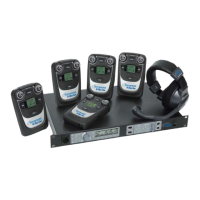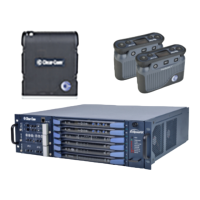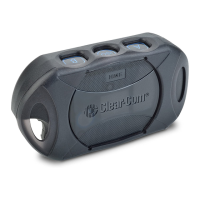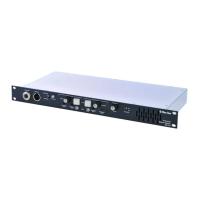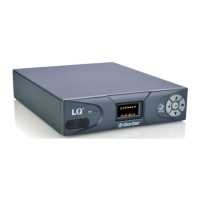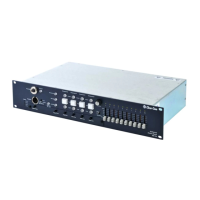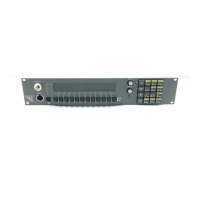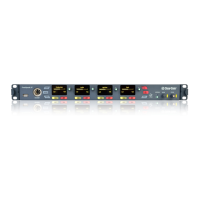Clear-Com®
Tempest®2400 2-Channel Wireless Intercom System 43
Factors that aect the maximum number of systems that may be collocated in any given locaon include:
• The existence and extent of harmful interference caused by in-band external radiators.
• Number of BaseStaons.
• Number of BeltStaons per BaseStaon.
• Whether or not Accu-Sync is being employed.
• Physical locaon of BaseStaon antennas (either on BaseStaons or on Transceivers).
• Physical locaon of the BeltStaons.
• Specic hopping paerns selected.
• Environment (wide open, reecve, through walls…).
Favorable system condions include:
• Locaons with lile or no interference from other 2.4GHz devices will provide the best opportunity for a large
number of collocated systems.
• Proper use of Accu-Sync resolves potenal desensing issues.
• Antennas of any parcular system should be separated from every other system’s antennas by at least 10 feet (3
meters) for best collocated system performance.
• BeltStaons operang at similar distances from their respecve BaseStaon antennas provide the best opportunity
for sasfactory performance of a large number of collocated systems.
• The hopping paern (Network Number) should be selected to ensure that there is a numerical separaon of four for
all collocated systems.
• Environment can play a big role in RF system performance. Every locaon is dierent and has its own unique set
of challenges. Generally speaking, locaons with very long paths to very reecve surfaces tend to be the most
dicult for digital wireless communicaon systems due to the prevalence of inter-symbol interference.
Maximum Number of Collocated Systems
With all factors listed above being favorable, a maximum of 10 Tempest systems, each with ve BeltStaons (in Normal
Mode), may be collocated with minimal or no user perceived impact on system range or performance.
The addion of one or more adverse condions will limit the number, eecveness and range of collocated systems in any
given environment proporonally to the extent of the adverse condion(s).
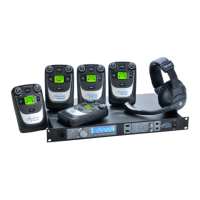
